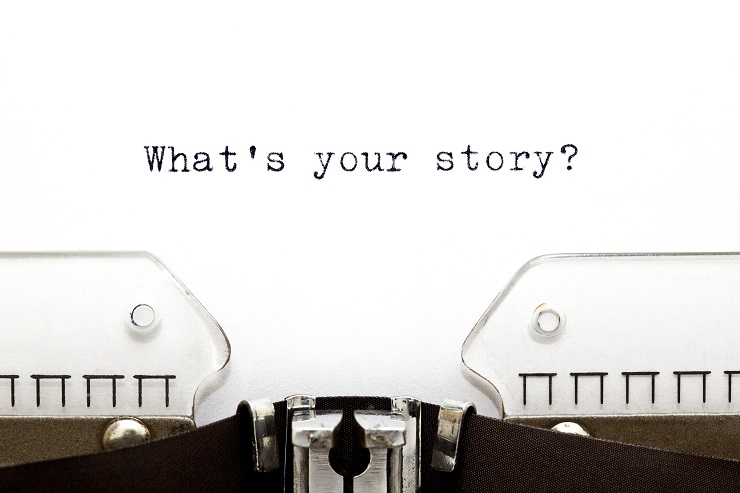
Set the Requirements
The first thing you need to do is decide where stories should be used at the site. Should the entire site breathe storytelling, or should it only be available in a menu choice? Your decision is based entirely on ambition, resources, which products you sell, and what your target group is.
What is your ambition for production of stories? Should it be monthly with several stories in a Magazine, or regularly in a blog or at certain times per year? How many stories per year, and what kind of resources is necessary? Who writes, an editor or everyone at the company? How do we find good stories and images? Set up a publication plan, assign resources, and gain approval of the work.
Present the Story
The story itself. Let us move from simple to advance. Remember that content is key. If you have an engaging story and your customers want to share it, a simple editorial page is enough. If you have resources to package it in design, image, and movie – even better. Presentation is a result of which resources you have and what impression you want to make.
The easiest setup to present a story can be found at Coca-Cola. Just text, and several stories at the same page. Use Coca-Cola’s tactic if you want an easy way to find stories to your company: arrange a competition where you ask the customers to describe a context where they uses your products and suddenly you have lots of stories to use.
Just as easy, but in another package is the Blog. The blog is common on e-commerce sites. You share information about the company, products, and related topics. The language in a blog should be personal, and the information updated when it is of current interest. The blog needs to be updated regularly with current posts to be of interest – a dropped blog is of no interest to a customer. You can choose to present articles and stories in the blog. Wiggle often posts stories about their employees in their blog.
A good example of packaging stories is Norröna, seller of outdoor products: a wide slideshow on the top, text and more images in the middle, and related, buyable products at last as a call-to-action. High quality in both text and images, and technically easy to produce. The product tips are relevant, and the reader becomes interested in the products after reading the story. Easy and clear.
The Italian bike manufacturer Colnago works with images. The company’s history is described with a picture collage and just a little text. After a vertical scroll all the way down, passing a number of legendary bikers, awards, and yellow and pink jerseys, all trust has effectively been built up that is needed for the brand, letting the images tell the story. You can do a similar thing for your company, by for example simple Instagram pictures. Pay attention to minimizing the load time when there are a lot of images involved so the visitor doesn’t have to wait.
The fashion industry has short product cycles, trends come and go quickly. The overall pattern for fashion chains is packaging stories in a Magazine – a web paper with just a little text, and a lot of images. The Magazine is similar to a paper fashion magazine, a format that fashion customers are already familiar with. Stories are packaged in the Magazine during new collections, and articles related to the collection, trend, and time of the year. If the pages are produced for the web, they are ready to link to products in the web shop. Stories in the Magazine have a short durability, and demand regular production work. At the same time, the Magazine tells the visitor that there will be more issues, which encourages new visits. The Magazine gives you the opportunity to have the same or similar Magazines at the web and distributed in the store. Examples of Magazines can be found at Nelly, Lindex, Volt, and Stayhard.

Lindex’ Magazine, web based, integrated with the web shop.
Use vertical scroll with a so called parallax scroll if you want an expensive story, a trend in web design. Parallax scroll is when several image layers are scrolled at the same time with different speed relative to another. The setup is high image quality, expensive graphical design, and a mix of text, images, movie, sound, and product. This type of presentation is often used together with a campaign. The advantage is that you have a page that surprise and engage the customers. The disadvantage is that it is an expensive production. Volkswagen Beetle is a good example of how it can work. Pay attention to the top navigation, and that every “step” in the vertical scroll is a page of its own, which works in all with a well thought-out flow. The vertical scroll is finished with a clear call-to-action: Buy the product, Contact us, Take the next step.
Movies
Stories can of course be told just as well in movies. Klubbhuset uses movies in a large extent. Check out their ambitious Youtube channel Klubbhuset TV where most movies are filmed with their own personnel on location in the store. If you then visit the store, you will recognize both staff and venue. The setup automatically creates a personal connection, and the visitors get a picture of the company’s personnel and store. It is important to select engaged persons in the movie, who can act in front of a camera. Movies are especially good to show things that are hard to explain in writing, how would a skate trick be described in text? Make sure to have clear descriptions of the movies for visitors to select what they want to view.
Related Products
The overall pattern to connect products to a story is to place related buyable products at the bottom of the page in a mini gallery as a direct call-to-action. You can also work with so called hotspots, clickable link icons in the images that opens a buying layer. If the products are present in the story, customers will see it as natural, and in many cases desirable that the products can easily be ordered in the same context.
Facilitate Social Media
Share, share, share – encourage sharing via social media. You facilitate spreading on social media by having a page that presents the story with functions to share with visible logon on the top or bottom. Select and make the logos larger and eye-catching for the social media your customers use the most, rather than a smaller overall row with icons. Of course, you will push for the stories in the company’s own social media, such as Facebook, Twitter, and LinkedIn.

A nice example of social icons at Appnova Blog.
After the Story is Published
Have a regular follow up on your stories: how many have visited the story, has it generated any orders? Can the visitors find the page? Which type of texts get the most clicks, and longest page display time? Do you have new visitors directly to the story through search engines? And in the end… does it pay off to write more stories?
At Last
A good story is writing about something that others want to read about. It is as simple as that… and so difficult at the same time. Write for others to read, and be engaged by what they read. Write about you own passions. Avoid writing just to publish something. Be personal and give the reader something worth remembering.
In my previous articles about storytelling, I have mentioned why you should use storytelling, and how you can find a story. Have my articles inspired you to publish a story? Please let me know how it turned out.